Fungal Infections
Superficial fungi: colonize skin and mucosal surfaces; are typically non-invasive in immunocompetent hosts.
Candida: found commonly on skin, in oral cavity, in vagina, and sometimes
in GI tract but usually justs sits on the epithelial surface. Produces disease
when it becomes invasive (in debilitated or immunosuppressed individuals).
Inflammatory response is more neutrophilic than granulomatous.
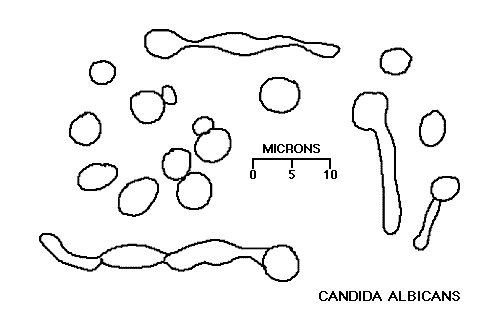
Dermatophytes: found on skin surfaces and cause a variety of annoying conditions. The three main genera can be recognized by morphologic appearances in culture, but clinically they are defined primarily by location.
Tinea corporis: 'ringworm' Tinea cruris: 'jock itch' Tinea pedis: 'athelete's foot' Tinea capitis: 'scalp itch'
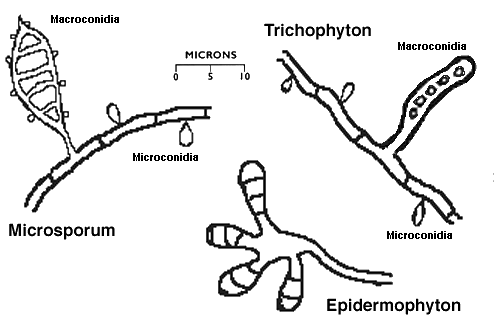
Pathogenic fungi: have an environmental form and a tissue form at 37o C; many are inhaled and produce pulmonary disease; can disseminate in
immunocompromised persons; produce tissue granulomas
Histoplasma capsulatum: histoplasmosis, small fungi like to grow in
macrophages; endemic to Mississippi and Ohio river valleys
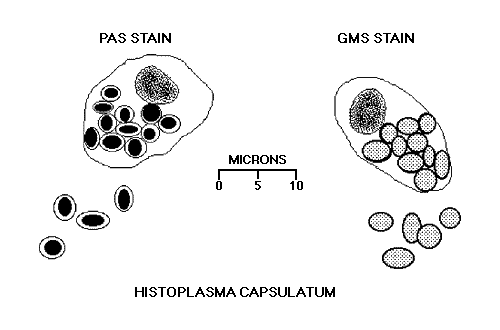
Cryptococcus neoformans: cryptococcosis, narrow-based budding fungi have big mucoid capsules that show up with India ink prep; produces pneumonia and/or meningitis; no specific geographic distribution

Coccidioides immitis: coccidioidomycosis produced by big fungal
spherules; endemic to desert southwest (mainly Arizona, California)
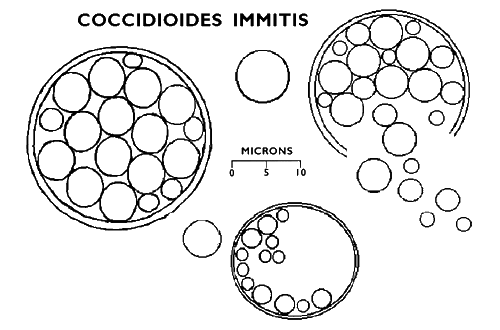
Paracoccidioides brasiliensis: paracoccidioidomycosis with mucocutaneous granulomas produced by organisms with multiple budding (seen in South America)
Blastomyces dermatididis: blastomycosis can produce pulmonary disease and systemic disease; organisms demonstrate broad-based budding (seen in North America)
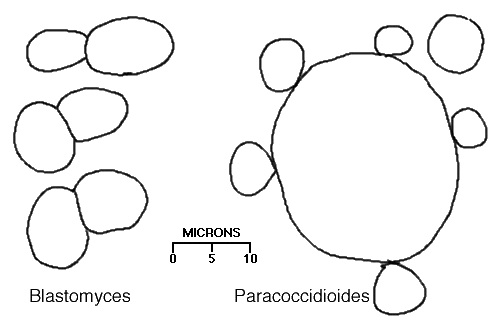
Mucormycosis: these are the "true" fungi in three genera (Mucor, Rhizopus, Absidia) that all look and act similarly in tissue with broad, short, non-septate hyphae. Acquired in hospital by diabetics and immunosuppressed
patients.
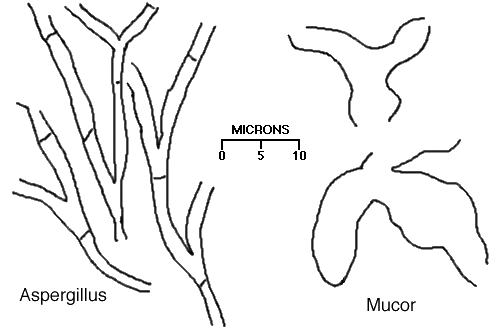
Aspergillosis: several species of Aspergillus cause human disease
characterized by pulmonary involvment and rare dissemination; produces narrow
branching septate hyphae in clusters or balls; likes to colonize debilitated and
immunocompromised patients, particularly with pre-existing lung disease
Allergic form: non-invasive Aspergillus produce bronchial asthma Colonizing form: Aspergillus grows in old lung cavities Invasive form: Aspergillus loves to invade blood vessels
 Next section. Next section.
 Return to the tutorial menu. Return to the tutorial menu.
|
 Return to the tutorial menu.
Return to the tutorial menu.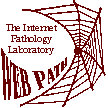

 Return to the tutorial menu.
Return to the tutorial menu.